|
Books Should Be Free Loyal Books Free Public Domain Audiobooks & eBook Downloads |
|
|
Books Should Be Free Loyal Books Free Public Domain Audiobooks & eBook Downloads |
|
Science Fiction |
|---|
Book type:
Sort by:
View by:
|
By: Alexandre Chatrian (1826-1890) | |
|---|---|
 Stories of the Rhine
Stories of the Rhine
Émile Erckmann and Alexandre Chatrian, more widely known by their joint nom de plume Erckmann-Chatrian, were in their time more recognized and known locally for their militaristic historical fiction. But of perhaps a more long-lasting influence was their strange and fantastical stories of the macabre where one imagines they were influenced by fellow weird writer E. T. A. Hoffmann of whom many of their stories strikes a similar feel. Noted horror authors such as M. R. James and H. P. Lovecraft have at times professed to have been fans of their work as well... | |
By: Edward Everett Evans (1893-1958) | |
|---|---|
 Planet Mappers
Planet Mappers
The Carver family are out in space, travelling to new worlds to check them out for colonization. But, when Mr. Carver has an accident, and remains out of commission for the trip, his sons, Jon and Jak, step up and take over their trip. The boys use their different talents to make their journey a successful one! | |
By: Garrett P. Serviss (1851-1929) | |
|---|---|
 Columbus of Space
Columbus of Space
A classic science fiction adventure in the style of and dedicated to the readers of Jules Verne. An independent scientist discovers the secret of “inter-atomic energy”, and with it builds a craft which carries himself and three friends to Venus, where they discover the dwellers of the dark side, incredible floating cities, and peril at every turn. | |
By: Philip Francis Nowlan (1888-1940) | |
|---|---|
 Airlords of Han
Airlords of Han
Airlords of Han is the 2nd Buck Rogers story, the sequel to Armageddon 2419 A.D.. Anthony Rogers takes the fight to free 25th Century America to the Han overlords. From the March, 1929 issue of Amazing Stories. | |
 Armageddon- 2419 A.D.
Armageddon- 2419 A.D.
Elsewhere I have set down, for whatever interest they have in this, the 25th Century, my personal recollections of the 20th Century. Now it occurs to me that my memoirs of the 25th Century may have an equal interest 500 years from now—particularly in view of that unique perspective from which I have seen the 25th Century, entering it as I did, in one leap across a gap of 492 years. This statement requires elucidation. There are still many in the world who are not familiar with my unique experience... | |
By: Samuel R. Delaney (1942-) | |
|---|---|
 Jewels of Aptor
Jewels of Aptor
Delany's first novel, from 1962, serves as a sort of prologue to the subsequent Captives of the Flame, 1963. Set several centuries after the Great Fire -- a nuclear holocaust -- a young woman seeks her destiny with the help of a four-armed youth. | |
 Captives of the Flame
Captives of the Flame
Chip Delany's 2nd novel -- the first is The Jewels of Aptor (1962) -- published by Ace Books in 1963. Set in the 35th Century, the survivors of a nuclear war live on the coastline and an island in a kingdom ruled by a royal family in disrepair. A young victim -- the son of a wealthy merchant -- of their wrath becomes a working-class hero as he fights to get back his good name, aided by a disaffected member of the royal family. This was later rewritten as Out of The Dead City by Delany as part of the Towers Trilogy, an early masterpiece, imo. (Introduction by BellonaTimes) | |
By: Various | |
|---|---|
 Short Science Fiction Collection 053
Short Science Fiction Collection 053
Science fiction is a genre encompassing imaginative works that take place in this world or that of the author’s creation where anything is possible. The only rules are those set forth by the author. The speculative nature of the genre inspires thought and plants seeds that have led to advances in science. The genre can spark an interest in the sciences and is cited as the impetus for the career choice of many scientists. It is a playing field to explore social perspectives, predictions of the future, and engage in adventures unbound into the richness of the human mind. | |
 Short Science Fiction Collection 051
Short Science Fiction Collection 051
Science fiction is a genre encompassing imaginative works that take place in this world or that of the author’s creation where anything is possible. The only rules are those set forth by the author. The speculative nature of the genre inspires thought and plants seeds that have led to advances in science. The genre can spark an interest in the science and is cited as the impetus for the career choice of many scientists. It is a playing field to explore social perspectives, predictions of the future, and engage in adventures unbound into the richness of the human mind. | |
 Short Science Fiction Collection 049
Short Science Fiction Collection 049
Science fiction is a genre encompassing imaginative works that take place in this world or that of the author’s creation where anything is possible. The only rules are those set forth by the author. The speculative nature of the genre inspires thought, and plants seeds that have led to advances in science. Many people chose to become scientists because science fiction sparked their interest. It is a playing field to explore social perspectives, predictions of the future, and engage in adventures unbound into the richness of the human mind.- | |
 Short Science Fiction Collection 047
Short Science Fiction Collection 047
This is a collection of science fiction short stories. | |
 Short Science Fiction Collection 052
Short Science Fiction Collection 052
Science fiction is a genre encompassing imaginative works that take place in this world or that of the author’s creation where anything is possible. The only rules are those set forth by the author. The speculative nature of the genre inspires thought and plants seeds that have led to advances in science. The genre can spark an interest in the science and is cited as the impetus for the career choice of many scientists. It is a playing field to explore social perspectives, predictions of the future, and engage in adventures unbound into the richness of the human mind. | |
 Short Science Fiction Collection 050
Short Science Fiction Collection 050
Science fiction is a genre encompassing imaginative works that take place in this world or that of the author’s creation where anything is possible. The only rules are those set forth by the author. The speculative nature of the genre inspires thought, and plants seeds that have led to advances in science. The genre can spark an interest in the science and is cited as the impetus for the career choice of many scientists. It is a playing field to explore social perspectives, predictions of the future, and engage in adventures unbound into the richness of the human mind. | |
 Short Science Fiction Collection 048
Short Science Fiction Collection 048
Science Fiction is speculative literature that generally explores the consequences of ideas which are roughly consistent with nature and scientific method, but are not facts of the author’s contemporary world. The stories often represent philosophical thought experiments presented in entertaining ways. Protagonists typically "think" rather than "shoot" their way out of problems, but the definition is flexible because there are no limits on an author's imagination. The reader-selected stories presented here were written prior to 1962 and became US public domain texts when their copyrights expired. | |
By: Willis George Emerson (1856-1918) | |
|---|---|
 Smoky God or a Voyage to the Inner World
Smoky God or a Voyage to the Inner World
The Smoky God, or A Voyage Journey to the Inner Earth is the narrative of an aged Norwegian sailor compelled before he dies to tell the story of how he found a passageway to the center of the earth and discovered a world peopled with giants. | |
By: Alan E. Nourse (1928-1992) | |
|---|---|
 Man Obsessed
Man Obsessed
Jeffrey Meyer had a killing on his mind. It meant nothing to him that his towering Twenty-first Century world was going mad. He shouldered aside the rising tide of narcotics-mania, the gambling fever, the insatiable lust for the irrational. Jeff had his own all-consuming obsession—Paul Conroe must die! After a five-year frenzied chase, Jeff had his victim cornered; he'd driven him into the last hideaway of the world's most desperate men—the sealed vaults of the human-vivisectionists. And Jeff knew that to reach his final horrible objective, he must offer himself also as a guinea pig for the secret experiments of the world's most feared physicians! | |
 Four Science Fiction Stories
Four Science Fiction Stories
Four Science Fiction stories published in Science Fiction Adventures Magazine and Galaxy Science Fiction, written by Alan Edward Nourse . He was an American science fiction writer and physician. He wrote both juvenile and adult science fiction, as well as nonfiction works about medicine and science. His SF works sometimes focused on medicine and/or psionics. - Summary by wikipedia.org | |
By: Alan Edward Nourse (1928-1992) | |
|---|---|
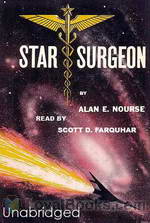 Star Surgeon
Star Surgeon
A thrilling intergalactic adventure, Star Surgeon follows the journey of Dal Timgar as he strives to achieve his lifelong goal of becoming a physician. Published in 1959, the novel explores themes of discrimination, prejudice, and racial oppression, while also presenting key elements of science fiction including interplanetary travel, intergalactic medicine, aliens, and advanced technology. The thrilling tale begins with the introduction of Dal Timgar, a young alien from Garv, who has aspired to become a doctor for as long as he can remember... | |
 Five Stories by Alan Nourse
Five Stories by Alan Nourse
These Five Stories were written by Alan Edward Nourse, an American science fiction (SF) author and physician. He wrote both juvenile and adult science fiction, as well as nonfiction works about medicine and science. His SF works generally focused on medicine and/or psionics. Psionics refers to the practice, study, or psychic ability of using the mind to induce paranormal phenomena. Examples of this include telepathy, telekinesis, and other workings of the outside world through the psyche. | |
By: Alfred Bester (1913-1987) | |
|---|---|
 Push Of A Finger
Push Of A Finger
Science fiction from the 50s by one of the masters, Alfred Bester. Society has committed itself to complete stability. Nothing is allowed to upset this stability, nothing that is not planned and approved and accounted for in advance. Yes, this is hard to imagine but this has produced decades, nay, centuries of predictable prosperity and peace. Even the newspapers have very little to write about. One reporter however is curious about the "Prog" building, where pronouncements are issued every day just as Moses issued the commandments... | |
By: Alfred Lawson (1869-1954) | |
|---|---|
 Born Again
Born Again
"I doubt that anyone who reads [Born Again] will ever forget it: it is quite singularly bad, with long undigestible rants against the evils of the world, an impossibly idealistic Utopian prescription for the said evils, and - as you will have gathered - a very silly plot." - oddbooks.co.ukAlfred Lawson was a veritable Renaissance man: a professional baseball player, a luminary in the field of aviation, an outspoken advocate of vegetarianism and economic reform, and the founder of a pseudo-scientific crackpot philosophy called Lawsonomy... | |
By: Alice Ilgenfritz Jones (1846-1906) | |
|---|---|
 Unveiling a Parallel
Unveiling a Parallel
In this work of utopian science fiction from the Victorian era written by Two Women of the West, a moniker for Alice Ilgenfritz Jones and Ella Marchant. A man travels to Mars to discover an Utopian world which is parallel to the Earth in some ways, but strikingly different in some. The freedom of women is not of this world. It is especially intriguing coming from the imagination of these two American women in the 19th Century. Summary by A. Gramour | |
By: Allen Glasser (1908-1971) | |
|---|---|
 Martian
Martian
The water was evaporated by the ever-shining sun until there was none left for the thirsty plants. Every year more workers died in misery. A stranger from another world comes and experiences the attempts by two different cultures with different languages to understand what the other wants. Not all educated cultures are cordial or sympathetic to new arrivals. This book explores one potential outcome of the meeting of alien races. - Summary by Paul Harvey | |
By: Andre Norton (1912-2005) | |
|---|---|
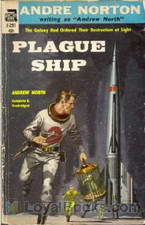 Plague Ship
Plague Ship
A Free Trader rocket ship heads for the remote planet, Sargol, which is blessed with immense natural wealth and precious gemstones. The ship is manned by the heroic Dane Thorson and his crew of intrepid space traders. On Sargol, they enter into complicated negotiations with the inhabitants of this strange planet. These feline people, the Salariki, are reluctant to enter into a business partnership with the free traders till they discover that the ship carries a small amount of catnip on board which they'd obtained from another trading post... | |
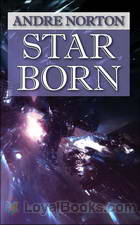 Star Born
Star Born
If you've read and enjoyed The Stars Are Ours, you will certainly enjoy this exciting sequel! Star Born by Andre Norton was first published in 1957, two years after the previous book and is in itself a complete and riveting read. The theme depicts an early inter-stellar flight undertaken by people who call themselves the Free Scientists escaping from an oppressive regime on Earth. When Pax, a global authoritarian regime takes over the planet, it deems all space travel illegal. However this small group flees before the rules come into force... | |
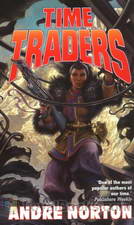 The Time Traders
The Time Traders
If it is possible to conquer space, then perhaps it is also possible to conquer time. At least that was the theory American scientists were exploring in an effort to explain the new sources of knowledge the Russians possessed. Perhaps Russian scientists had discovered how to transport themselves back in time in order to learn long-forgotten secrets of the past. That was why young Ross Murdock, above average in intelligence but a belligerently independent nonconformist, found himself on a “hush-hush” government project at a secret base in the Arctic... | |
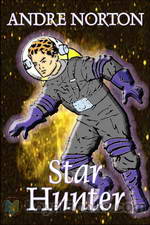 Star Hunter
Star Hunter
A science fiction novella depicting a thrilling cat-and-mouse game which plays out between a credulous young man and an interstellar safari leader, as the two take up an unanticipated adventure on the mysterious planet Jumala. Norton combines mind control, cunning schemes, interstellar travel, and alien intelligence in an action-packed adventure. The story unfolds with the introduction of Ras Hume, a pilot and Out-Hunter, who with the help of a criminal mastermind from the planet Nahuatl plans a conspiracy to secure a fortune by manipulating its supposed beneficiary... | |
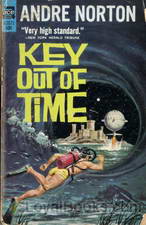 Key Out of Time
Key Out of Time
This is Book 4 in the Time Traders Series, In this book Ross Murdock and Arthur Ashe continue their adventures in Time and Space on the World of Hawaika. Hawaiian and Polynesian settlers help Ross and Ashe discover the way the world has changed from the data tape to present time. Helped by a girl (Karara) and her two trained dolphins (Tino-rau and Taua) | |
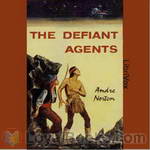 The Defiant Agents
The Defiant Agents
Travis Fox and a band of fellow Apache AmerIndians have their racial memories and survival abilities enhanced by the Redax machine and are sent to the planet Topaz, one of the few worlds of the ancient star empire that the US has voyage tapes to. But the Reds have “snooped” the tapes and get there first, and have a nasty surprise waiting for any ship that does not have the proper identification. Travis and some of his fellow Apaches survive the ensuing crash landing…but can they defeat the Reds and win Topaz for themselves? This work is a sequel to both The Time Traders and Galactic Derelict... | |
 The People of the Crater
The People of the Crater
An air force pilot adrift in peacetime is recruited to join an Antarctic expedition. When a strange mist downs his plane he discovers an ancient alien civilization which has prophesized his arrival. Now he and his faithful pet Ana must descend to the depths of the crater and face the Black Ones in order to rescue the fair Thrala, daughter of the Ancient Ones. – Andre Norton (Alice Mary Norton) was a popular author of science fiction and fantasy who began publishing stories in the early 1930s. “The People of the Crater” was first published in volume 1 number 1 of Fantasy Book in 1947. | |
By: Anna Adolph (1841-1917) | |
|---|---|
 Arqtiq: A Study of the Marvels at the North Pole
Arqtiq: A Study of the Marvels at the North Pole
Described by author Liza Daly as a "strange masterpiece of outsider art," Arqtiq is a bizarre, borderline hallucinatory work of feminist utopian fiction. Equal parts sci-fi adventure, philosophical tract, and pro-Symmesian pamphlet, Anna Adolph’s strange, self-published novella centers its narrative around an aviator who, along with a ragtag group of family and friends, charts an expedition to the North Pole in a retro-futuristic airship of her own invention. There, Anna and her crew travel into the hollow earth, encounter a race of telepathic giants, and uncover secrets about God and the universe... | |
By: Anna Bowman Dodd (1855-1929) | |
|---|---|
 Republic of the Future
Republic of the Future
or Socialism a Reality In the year 2050, Wolfgang travels to the socialist city of New York. He writes enthusiastically to his friend Hannevig describing the wonders of the journey and vastness of the city. He then turns his eye and pen to the effects of true equality of the sexes and freedom from work. Unfortunately for the New Yorkers, they do not create the desired utopia but just the opposite. | |
By: Anthony Pelcher (1897-1981) | |
|---|---|
 Astounding Stories 04, April 1930
Astounding Stories 04, April 1930
The fourth issue of Astounding Stories continues Ray Cummings serial "Brigands of the Moon", along with pulp sci-fi stories by Capt. S. P. Meek, Anthony Pelcher and other authors. | |
By: Anthony Trollope (1815-1882) | |
|---|---|
 Fixed Period
Fixed Period
This book is set in 1980 in the Republic of Britannula, which is a fictional island near New Zealand. It deals with euthanasia as a radical solution to the problem of the aged. The novel is in the form of a personal account written by the President of Britannula about the island's recent history. It has often been said that when the book came out Trollope had reached the age of 67. Interesting is the fact that this is the exact age at which all Britannulans are required by law to retire from their worldly affairs and begin a year of preparation for death. | |
By: Ayn Rand (1905-1982) | |
|---|---|
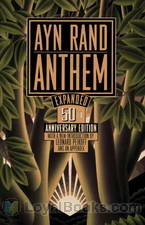 Anthem
Anthem
The title 'Anthem' is derived as an anthem to sense of self and self-governing thoughts. Anthem is a story of Equality 7-2521 who is a young man living in some unspecified future time and place. In this future era freedom and individual rights have been eradicated. The starring character of the novel is an inquisitive street cleaner. He lives in a society where people have lost their knowledge of individualism, to the extreme that people do not know words like 'I' or 'mine'. All the people live and work for their livelihood in collective groups, along with the people with power, namely the 'Councils'... | |
By: Baron Ludvig Holberg (1684-1754) | |
|---|---|
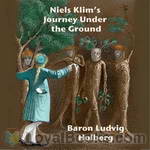 Niels Klim's Journey Under the Ground
Niels Klim's Journey Under the Ground
Niels Klim’s Underground Travels, originally published in Latin as “Nicolai Klimii Iter Subterraneum” (1741) is a satirical science-fiction/fantasy novel written by Ludvig Holberg, a Norwegian-Danish dramatist, historian, and essayist, born in Bergen, Norway. It was his first and only novel. It describes a utopian society from an outsider’s point of view, and often pokes fun at diverse cultural and social topics such as moral, science, sexual equality, religion, governments, and philosophy. | |
By: Ben Bova (1932-) | |
|---|---|
 The Dueling Machine
The Dueling Machine
The Dueling Machine is the solution to settling disputes without injury. After you and your opponent select weapons and environments you are injected into an artificial reality where you fight to the virtual death… but no one actually gets hurt. That is, until a warrior from the Kerak Empire figures a way to execute real-world killings from within the machine. Now its inventor Dr. Leoh has to prevent his machine from becoming a tool of conquest. – The Dueling Machine, written with Myron R. Lewis, first appeared in the May, 1963 issue of Analog Science Fact & Fiction. | |
By: C. M. Kornbluth (1923-1958) | |
|---|---|
 Search the Sky
Search the Sky
Ross was a junior trader on Halsey's Planet, and had great prospects but was not happy at all. Everything smelled of decay. The whole planet seemed to be slowly disappearing, the population dwindling month by month and year by year and yet no one seemd to care or even notice. Something was very, very wrong. When the first interstellar transport in 30 years arrived on Halsey's Planet, it brought things to a head. The ship had touched on six other colony worlds - and all six had been devoid of human life... | |
 Wolfbane
Wolfbane
This science fiction novel takes place in the year 2203, if we take literally the age of 250 years. A rogue planet, populated by strange machines known as Pyramids, has stolen the Earth from the Solar system, taking it off into interstellar space. The moon has been 'ignited' by alien technology to serve as a miniature sun around which both planets orbit. This new sun is rekindled every 5 years, though as the book opens, the rekindling is nearly overdue and there is fear among the populace that it may never happen again. - Summary by Wikipedia | |
By: C.V. Tench | |
|---|---|
 Astounding Stories 01, January 1930
Astounding Stories 01, January 1930
In January of 1930 a new magazine with a flashy color cover appeared on newsstands, Astounding Stories of Super-Science. Filled with stories of adventure, sometimes with only a tinge of science, this magazine was to host and nurture many science fiction giants like Murray Leinster and Ray Cummings and would help inspire many of the writers of the "Golden Age of Science Fiction". This inaugural issue includes stories by Murray Leinster, Ray Cummings, S. P. Meek, Victor Rousseau and others. | |
By: Camille Flammarion (1842-1925) | |
|---|---|
 Omega: The Last Days of the World
Omega: The Last Days of the World
Omega: The Last Days of the World is a science fiction novel by astronomer Camille Flammarion. On 25th century Earth, a comet is on a path to collide with the Earth ending it all. Astronomers predict different scenarios as to how they will all die depending on the chemical composition of the comet. Omega probes the philosophical and political consequences that arise as the human race faces the end of the world. | |
 Urania
Urania
Urania is a work of science fiction from the fine mind of French astronomer Camille Flammarion. Named for Urania, the muse of astronomy, this book in three parts delves into philosophy, astronomy, interplanetary travel, romance, Mars, and the nature of reality. - Summary by A. Gramour | |
By: Captain S. P. Meek (1894-1972) | |
|---|---|
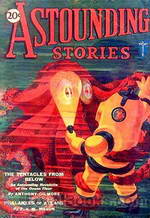 Astounding Stories 14, February 1931
Astounding Stories 14, February 1931
This issue includes "Werewolves of War" by D. W. Hall, "The Tentacles from Below" by Anthony Gilmore, "The Black Lamp" by Captain S. P. Meek, "Phalanxes of Atlans" by F. V. W. Mason, and contues with "The Pirate Planet" by Charles W. Diffin, | |
By: Carey Rockwell | |
|---|---|
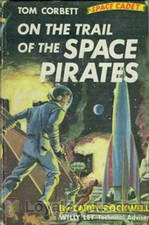 On the Trail of the Space Pirates
On the Trail of the Space Pirates
Tom Corbett is the main character in a series of Tom Corbett — Space Cadet stories that were depicted in television, radio, books, comic books, comic strips, and other media in the 1950s. The stories followed the adventures of Corbett and other cadets at the Space Academy as they train to become members of the Solar Guard. The action takes place at the Academy in classrooms and bunkrooms, aboard their training ship the rocket cruiser Polaris, and on alien worlds, both within our solar system and in orbit around nearby stars... | |
 Sabotage in Space
Sabotage in Space
This book is part of the on-going adventures of Tom Corbett in the Space Cadet Stories. Tom, Astro and Roger are determined to find the saboteurs but get framed in the process, risking court martial and expulsion from the Space Academy. NOTE: Carey Rockwell is a pseudonym used by Grosset & Dunlap. It is unknown who wrote the books. | |
 Danger in Deep Space (Dramatic Reading)
Danger in Deep Space (Dramatic Reading)
The year is 2353. Tom Corbett is a cadet with the Space Academy, training to become a member of the elite Solar Guard. Sent on a top-secret mission across the stars, Tom and his fellow crew members discover the nature of true loyalty, as they battle against danger in deep space. | |
By: Carl Richard Jacobi (1908-1997) | |
|---|---|
 Cosmic Castaway
Cosmic Castaway
"Within a year Earth would be a vassal world, with the Sirian invaders triumphant. Only Standish, Earth's Defense Engineer, could halt that last victorious onslaught—and he was helpless, the lone survivor of a prison ship wrecked in uncharted space." - Summary by publishers blurb | |
By: Carl Selwyn | |
|---|---|
 Venus Has Green Eyes
Venus Has Green Eyes
Flip Miller was a man about the universe, surviving one harrowing escapade after another and seeking for the lucky break that would make his fortune. Finally he had found in in a scrap of a map to a lost mine on Venus. Only he was foolish enough to search it out in the steaming jungle of that mud covered planet. But it was true and unbelievable riches were soon to be his. Well, as soon as he could get a ride out of the mud island where his plane had broken down. The one thing he was never afraid of in all his adventures were women... | |
By: Charles B. Cory (1857-1921) | |
|---|---|
 Montezuma's Castle and Other Weird Tales
Montezuma's Castle and Other Weird Tales
This is a collection of weird tales inspired from the natural history expeditions of the author, an independently wealthy bird collector, Olympic golfer, writer of many books on birds of the world, and, as evidenced in these pages, a fine storyteller to boot. | |
By: Charles L. Fontenay | |
|---|---|
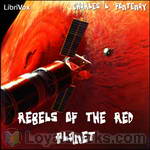 Rebels of the Red Planet
Rebels of the Red Planet
Dark Kensington had been dead for twenty-five years. It was a fact; everyone knew it. Then suddenly he reappeared, youthful, brilliant, ready to take over the Phoenix, the rebel group that worked to overthrow the tyranny that gripped the settlers on Mars.The Phoenix had been destroyed not once, not twice, but three times! But this time the resurrected Dark had new plans, plans which involved dangerous experiments in mutation and psionics.And now the rebels realized they were in double jeopardy.... | |
By: Charles W. Diffin (1884-1966) | |
|---|---|
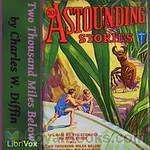 Two Thousand Miles Below
Two Thousand Miles Below
A science fiction novel that was originally produced in four parts in the publication: Astounding Stories in June, September, November 1932, January 1933. The main character is Dean Rawson, who plans on discovering a way of mining power from a dead volcano, but ends up discovering more than he bargained for. | |
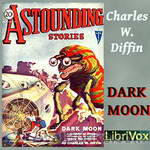 Dark Moon
Dark Moon
Mysterious, dark, out of the unknown deep comes a new satellite to lure three courageous Earthlings on to strange adventures. | |
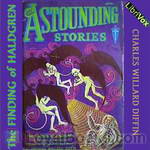 The Finding of Haldgren
The Finding of Haldgren
Chet Ballard answers the pinpoint of light that from the craggy desolation of the moon stabs out man's old call for help. | |
By: Charles Willard Diffin (1884-1966) | |
|---|---|
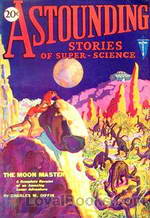 Moon Master
Moon Master
Through Infinite Deeps of Space Jerry Foster Hurtles to the Moon—Only to be Trapped by a Barbaric Race and Offered as a Living Sacrifice to Oong, their Loathsome, Hypnotic God. | |
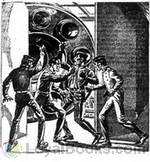 Brood of the Dark Moon
Brood of the Dark Moon
Once more Chet, Walt and Diane are united in a wild ride to the Dark Moon—but this time they go as prisoners of their deadly enemy Schwartzmann. | |
By: Charles-François Tiphaigne de La Roche (1722-1744) | |
|---|---|
 Giphantia
Giphantia
After having gone over the whole world and visited all the inhabitants, I find it does not answer the pains I have taken. I have just been reviewing my memoirs concerning the several nations, their prejudices, their customs and manners, their politicks, their laws, their religion, their history; and I have thrown them all into the fire. It grieves me to record such a monstrous mixture of humanity and barbarousness, of grandeur and meanness, of reason and folly. The small part, I have preserv’d, is what I am now publishing. If it has no other merit, certainly it has novelty to recommend it. - Summary by Introduction to Giphantia | |
By: Charlotte Perkins Gilman (1860-1935) | |
|---|---|
 Herland
Herland
Herland is a utopian novel from 1915, written by feminist Charlotte Perkins Gilman. The book describes an isolated society comprised entirely of Aryan women who reproduce via parthenogenesis (asexual reproduction). The result is an ideal social order, free of war, conflict and domination. It first appeared as a serial in Perkin’s monthly magazine Forerunner. | |
By: Cicely Hamilton (1872-1952) | |
|---|---|
 Theodore Savage: A Story of the Past or the Future
Theodore Savage: A Story of the Past or the Future
Theodore Savage: A Story of the Past or the Future is an early work of dystopian science fiction. | |
By: Clifford D. Simak (1904-1988) | |
|---|---|
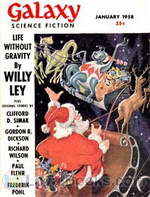 The World That Couldn't Be
The World That Couldn't Be
Layard was a curiosity to sociologists. The planet supported thriving tribes of natives but they were genderless. How could tribes form without families? But Gavin Duncan didn’t care. He had come to Layard to farm vua plants. Their berries cured mental illnesses and were one of the most expensive commodities in the galaxy. He was going to make his fortune if he could just keep the Cytha at bay, a big, dumb animal that could munch through 10 rows of vua in a night. Despite native superstitions he was going to have to hunt and kill the pest if he was to protect his crop... | |
 Empire
Empire
In a future time, the solar system is powered by one energy source, controlled by one huge organisation, which has plans to use this control to dominate the planets. Unknown to them, a couple of maverick scientists accidentally develop a completely new form of energy supply and threaten the corporation's monopoly. Naturally, the corporation can't allow this to happen... A stunning story about the manipulation of pure energy, climaxing in interstellar conflict. | |
By: Clifford Simak (1904-1988) | |
|---|---|
 Hellhounds of the Cosmos
Hellhounds of the Cosmos
From Astounding Stories of 1932. Earth is being attacked by horrible black monsters that appear from nowhere and destroy and kill everything and everyone in their paths. Nothing affects them, nothing stops them; they are impervious to all weapons. Earth is doomed. But there is one hope and it rests on the shoulders of 98 brave men. Can they do it? can they find a way of retaliating? Listen and find out. | |
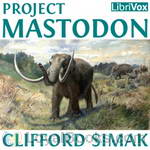 Project Mastodon
Project Mastodon
Clifford Simak deals with the implications of time travel in his own unique way in this story. What if a group of guys did it on their own, without any help from government or industry? On a shoestring,so to speak? Would anyone believe them? What would you do if you could go back 150,000 years to a time when mastodons and saber toothed tigers roamed North America? And what happens when they run out of money? All these questions are explored in the usual humorous, wry Simak way in this story. | |
By: Cyrano de Bergerac (1619-1655) | |
|---|---|
 Voyage to the Moon
Voyage to the Moon
This is an edition by Professor Curtis Page of the Lovell translation of a seminal work of science fiction by Cyrano de Bergerac. Arguably a whimsical forerunner to the adventure stories of Jules Verne, and the French sci-fi tradition generally, it is a utopian novel of space travel complete with rocket powered flight and extra-terrestrial beings. | |
By: Dallas McCord Reynolds (1917-1983) | |
|---|---|
 Status Quo
Status Quo
Larry Woolford is a government agent, tasked with investigating subversive activity. He does everything an ambitious young man should do if he wants to succeed: wear the right clothes, listen to the right music, even drink vodka martinis. Then he stumbles across a conspiracy of Weirds plotting to overthow the entire existing social order. It's a race against time. Can he stop their fiendish plan, and keep America safe for shallow judgements based on status symbols? Status Quo was nominated for the 1962 Hugo Award for short fiction. | |
 5 Science Fiction Stories by Mac Reynolds
5 Science Fiction Stories by Mac Reynolds
Five early stories by one of my favorite SF writers, Mack Reynolds. Medal of Honor is an intriguing look into the mind of someone who is above the law; who cannot commit a crime. How will he act? especially if he is a self centered drunk? Potential Enemy is story about the sad state of human minds that are ruled by fear and paranoia. Happy Ending is an SF story about the far future when the last solar system wide dictator has been finally defeated and what will he do? What will he do? This is also an exploration of mental megalomania and it's effects... | |
By: David Lindsay (1876-1945) | |
|---|---|
 A Voyage to Arcturus
A Voyage to Arcturus
A Voyage to Arcturus is a novel by Scottish writer David Lindsay, first published in 1920. It combines fantasy, philosophy, and science fiction in an exploration of the nature of good and evil and their relationship with existence. It has been described by critic and philosopher Colin Wilson as the "greatest novel of the twentieth century" and was a central influence on C. S. Lewis's Space Trilogy. | |
By: Donald Wandrei (1908-1987) | |
|---|---|
 Raiders of the Universes
Raiders of the Universes
It was the 34th century and all five of the Federation of Planets around Sol were buzzing with their usual activity when the Raiders appeared. They were indeed Raiders of Universes because they had ravaged many systems before reaching Earth and showed no signs of slowing down in the least. Their weapons were invincible, their greed merciless and their natures completely alien. Indeed 'they' were from another dimension entirely. Eating up entire solar systems and planets, they slowed down just a bit when intelligent life was found on Earth... | |
By: Donald Wollheim (1914-1990) | |
|---|---|
 The Secret Of The Ninth Planet
The Secret Of The Ninth Planet
An alien race has put a station on Earth and other planets in order to steal the rays of the sun, possible causing the sun to nova within two years. Burl Denning, a high school student, is the only person who has the power to stop the alien project. Can he and the crew of the experimental space ship Magellan act in time to save the earth? | |
By: Douglas Morey Ford (1851-1916) | |
|---|---|
 Raid of Dover: A Romance of the Reign of Woman A.D. 1940
Raid of Dover: A Romance of the Reign of Woman A.D. 1940
Britain is ruled by women who experience invasion and natural disasters. Men eventually figure out a plan to regain power to replace the government. - Summary by Kirk Z | |
By: Dwight V. Swain (1915-1992) | |
|---|---|
 Cry Chaos!
Cry Chaos!
Gripping and short, Cry, Chaos! is the speculative fiction story of one leader's valiant fight to protect the galaxy - and himself - from slavers and thieves. - Summary by April Mendis | |
By: E. E. Smith (1895-1965) | |
|---|---|
 Spacehounds of IPC
Spacehounds of IPC
When the Inter-Planetary Corporation's (IPC) crack liner “IPV Arcturus” took off on a routine flight to Mars, it turned out to be the beginning of a unexpected and long voyage. There had been too many reports of errors in ship's flight positions from the Check Stations and brilliant physicist Dr. Percival (“Steve”) Stevens is aboard the Arcturus on a fact-finding mission to find out what's really happening, and hopefully save the honor of the brave pilots of the space-liner Arcturus from the desk-jockeys' in the Check Stations implications of imprecision - the nastiest insult you could cast at a ships pilot... | |
 Skylark Three
Skylark Three
This is a sequel to The Skylark of Space. The novel concerns Richard Seaton and his allies who have encounters with aliens while fighting DuQuesne and the Fenachrone.. | |
 Subspace Survivors
Subspace Survivors
A team of space travelers are caught in a subspace accident which, up to now, no one has ever survived. But some of the survivors of the Procyon are not ordinary travelers. Their psi abilities allow them to see things before they happen. But will it be enough?Smith's story "Subspace Survivors" first appeared in the July 1960 issue of the magazine Astounding. | |
 Galaxy Primes
Galaxy Primes
They were four of the greatest minds in the Universe: Two men, two women, lost in an experimental spaceship billions of parsecs from home. And as they mentally charted the Cosmos to find their way back to earth, their own loves and hates were as startling as the worlds they encountered. | |
 First Lensman
First Lensman
The Secret Planet. No human had ever landed on the hidden planet of Arisia. A mysterious space barrier turned back both men and ships. Then the word came to Earth, "Go to Arisia!", Virgil Samms of the Galactic Patrol went--and came back with the Lens, the strange device that gave its wearer powers no man had ever possessed before. Samms knew the price of that power would be high. But even he had no idea of the ultimate cost, and the weird destiny waiting for the First Lensman. First Lensman is the sequel to Triplanetary, and the second book of E.E. "Doc" Smith's classic Lensman series. (from the original book cover and Mark Nelson) | |
 Tedric
Tedric
This is a wonderful combination of far future science fiction with Conan like sword and sorcery; lots of blood, gore, honor and evil. The immensely powerful hero, Tedric, is a man's man who refuses to accept the cruel human sacrifices demanded by the 'god' Sarpedion and is set on destroying him. To do this he needs some secrets of metallurgy that future social scientists are willing to give him. He manages to overcome all obstacles until of course he meets the dazzlingly lovely Lady Rhoaan who stops him cold... | |
 Masters of the Vortex
Masters of the Vortex
"Masters of the Vortex" is a 1960 novel by E.E. "Doc" Smith which incorporates and expands upon three short stories, "The Vortex Blaster", "Storm Cloud on Deka", and "The Vortex Blaster Makes War". Somewhat confusingly, it was originally published under the title "The Vortex Blaster", the same name as the first short story, before being republished as "Masters of the Vortex". It is the final novel, or a spinoff, of The Lensmen stories. It follows the adventures of Neal "Storm" Cloud, a brilliant mathematician who makes it his personal mission to snuff out wiild nuclear vortexes all over the galaxy, at great risk to his own safety... | |
 Skylark of Valeron
Skylark of Valeron
The Skylark of Valeron is the third volume in the classic Skylark trilogy by E.E. ‘Doc’ Smith. DuQuesne has survived to become Master of the Earth, ruling with an iron hand because the heroes, the Seatons and the Cranes must run for their lives into the fourth dimension from pure intellectual beings who can dematerialize them on a whim — from which dimension none have ever returned. If you have ever wondered what it like to exist in an extra dimensioned world 'Doc' Smith tells us here in graphic and exciting detail. This 'book' was published in seven installments in Astounding Stories from 1934 to 1935. - Summary by phil chenevert | |
 Vortex Blaster Makes War
Vortex Blaster Makes War
It's the Vortex Blaster, Doc Smith's science fiction hero that has already saved the world from atomic vortices with his prodigious computing mind, is thrust again into taking on more hero like behavior. What more needs be said? This pulp SF thriller was first published in 1942 in Astounding Stories. | |
 Storm Cloud on Deka
Storm Cloud on Deka
Another pulp Science Fiction saga by E.E.'Doc' Smith. The Galactic Civilization is established, lensmen are on every world. But those horrible Atomic Vorteces still rage on many worlds. The only man who can extinguish them, the human computer 'Storm' Cloud, is embroiled in a tangled affair in this story of nasty villians and partially clad women. Don't ask me, I just read this stuff. - Summary by phil chenevert | |
By: E. E. “Doc” Smith (1890-1965) | |
|---|---|
 Triplanetary, First in the Lensman Series
Triplanetary, First in the Lensman Series
Triplanetary was first serialized in Amazing Stories in 1934. After the Lensman series became popular, Smith took his Triplanetary story and turned it into the first of the Lensman series, using it as a prequel to give the back story for the protaganists in the Lensmen series. He added 6 new chapters, doubling it in size and it's really a different book from the serialized novel, being published 14 years after the first. It was put into Gutenberg just last year. The novel covers several episodes in an eons-long eugenics project of the super-intelligences of the Arisia... | |
By: E.E. Smith (1890-1965) | |
|---|---|
 The Vortex Blaster
The Vortex Blaster
Uncontrolled, terribly violent Atomic Vortices are slowly destroying civilization on every human planet throughout the galaxy. Nothing can contain or stop them despite the lensmen's best efforts until one destroys the home and family of "Storm" Cloud, brilliant atomic physicist. The tragedy triggers actions on his part that pit him one-on-one against the horrible vortices. Introducing "storm" Cloud as THE Vortex Blaster | |
By: E.E. “Doc” Smith (1890-1965) | |
|---|---|
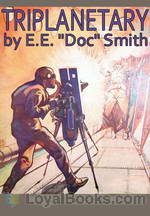 Triplanetary
Triplanetary
“Doc” E.E. Smith pretty much invented the space opera genre, and Triplanetary is a good and well-known example. Physics, time, and politics never stand in the way of a plot that gallops ahead without letup. Having earned a PhD in chemical engineering, it’s understandable that the heroes of Smith’s story are all scientists. He didn’t want to be constrained by the limits of known science, however, so in his hands the electromagnetic spectrum becomes a raw material to be molded into ever-more amazing and lethal forms, and the speed of light is no bar to traveling through the interstellar void... | |
By: Edgar Fawcett (1847-1904) | |
|---|---|
 Douglas Duane
Douglas Duane
An introverted, kind-hearted book collector befriends a mad scientist, who isn’t exactly a good friend. When the scientist falls in love with the book collector’s fiancée, he concocts an evil plot to have her for his own. Edgar Fawcett was a prolific author of standard fiction. With Douglas Duane he stepped out of his genre and created an unusual weird fiction work. | |
By: Edgar Rice Burroughs (1875-1950) | |
|---|---|
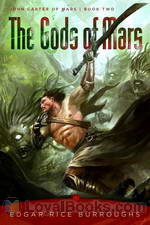 The Gods of Mars
The Gods of Mars
Burroughs’ second book in the classic Barsoom series, The Gods of Mars is a scientific fiction novel following the adventures of John Carter as he returns to Mars after a ten year hiatus in the hope of being reunited with his wife, child and the Red Martian people. First published as a five-part serial in a pulp magazine in the course of 1913, the novel was later published as a whole in 1918. A tale of audacity, honor, optimism, and perseverance, Burroughs successfully builds on to the previous book allowing a broader view of the Red Planet... | |
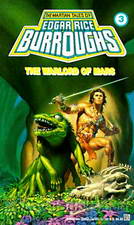 Warlord of Mars
Warlord of Mars
Warlord of Mars by Edgar Rice Burroughs was first published in 1913. It was the third book in an eleven part series known as the Barsoom Chronicles which relate to a sequence of exciting adventure tales set on the fictional planet of Barsoom. In the Barsoom series, Mars, assumed to be older than Earth, is a dying planet. “Barsoom” is the native word for Mars in the Martian language. The stories first appeared in serialized form in various magazines like All-Story, Argosy, Amazing Stories and The Blue Book... | |
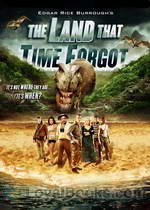 The Land that Time Forgot
The Land that Time Forgot
Off the coast of Greenland, a man finds a floating thermos bottle. Wedged tightly inside is a sheaf of papers covered with minute handwriting. As he begins to read, a fantastic tale begins to unwind. The writer, on his way to a WWI battlefield was shipwrecked and his entire regiment except for a woman and his faithful dog are killed. The three are rescued by a passing British tug, but fall prey to the schemes of a German spy aboard. They are then captured by the crew of a German U-boat. After many near mishaps, they sail towards Greenland... | |
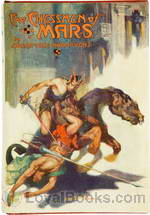 The Chessmen of Mars
The Chessmen of Mars
If you're a sci-fi fan, then you've probably heard of Edgar Rice Burroughs' famous Barsoom series of science fiction fantasy novels. Set in the “dying planet” Mars, the ten books in the series portray an Earthman, John Carter and his astral journey to the Red Planet, his marriage with a native princess and his descendants. The Chessmen of Mars is the fifth book in the Barsoom set, written in 1921 and published in serial form in Argosy magazine over the period of a year. Here, John Carter's daughter Tara meets Prince Gahan of the Gathol kingdom, but takes an instant dislike to the young and fashionable man, feeling that he is just a shallow youth... | |
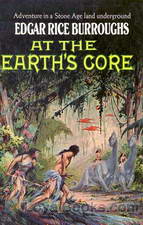 At the Earth's Core
At the Earth's Core
This is the first book in the Pellucidar series. Pellucidar is a fictional Hollow Earth milieu invented by Edgar Rice Burroughs for a series of action adventure stories. The stories initially involve the adventures of mining heir David Innes and his inventor friend Abner Perry after they use an “iron mole” to burrow 500 miles into the earth’s crust. (adapted from Wikipedia) | |
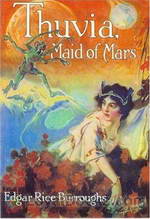 Thuvia, Maid of Mars
Thuvia, Maid of Mars
Published in 1920, Thuvia, Maid of Mars is the fourth book in the Barsoom series and concentrates on Carthoris, the son of infamous John Carter, and Thuvia, the princess of Ptarth, as they find themselves entangled in a complex web of love and strict traditions of Barsoom. A typical Burroughs piece, the installment contains all the required elements of an effective pulp fiction, including a hero, a damsel in distress, unforeseen complications, and a generous supply of action. Welcoming a new... | |
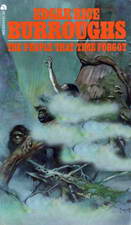 The People that Time Forgot
The People that Time Forgot
The People that Time Forgot is a science fiction novel, the second of Edgar Rice Burroughs’ “Caspak” trilogy. The first novel ended with the hero writing a manuscript of his adventures and casting it out to sea in his thermos bottle. The second novel begins with the finding of the manuscript and the organization of a rescue expedition. | |
 Pellucidar
Pellucidar
Pellucidar is a fictional “Hollow Earth” milieu invented by Edgar Rice Burroughs for a series of action adventure stories. The stories initially involve the adventures of mining heir David Innes and his inventor friend Abner Perry after they use an “iron mole” to burrow 500 miles into the earth’s crust. This is the second book in the series. | |
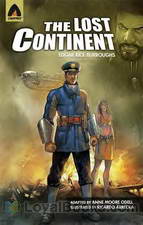 The Lost Continent
The Lost Continent
Originally published under the title Beyond Thirty. The novel, set in the year 2137, was heavily influenced by the events of World War I. In the future world depicted in the novel, Europe has descended into barbarism while an isolationist Western Hemisphere remains sheltered from the destruction. The title Beyond Thirty refers to the degree of longitude that inhabitants of the Western Hemisphere are forbidden to pass. | |
By: Edgar Rice Burroughs (1875-1950) | |
|---|---|
 Tarzan and the Ant Men
Tarzan and the Ant Men
Lord Greystoke, Tarzan of the Apes, is embroiled in thrilling adventures among the tiny, warlike Minunians. | |
 Moon Maid
Moon Maid
Sabotage accidentally takes Earth's first manned interplanetary expedition to the Moon, where a sublunar adventure ensues, involving two intelligent species and a good deal of fighting as well as romance. The perceptive reader will perceive the author's peculiar notions concerning the behavior of volcanos, an offense against scientific fact that is hard to pardon in a writer of science fiction, but if it can be overlooked, the variety of incident and the fast pace of the action, full of surprises, amply repay the reader's generous indulgence. Trilogy: The Moon Maid The Moon Men The Red Hawk | |
 The Moon Men
The Moon Men
The second book in the Moon Maid trilogy, this novel details the exploits of a descendant of the protagonist of the first novel as he leads a rebellion against moon dwellers who have enslaved the people of Earth. - Summary by Ben Tucker Trilogy: The Moon Maid The Moon Men The Red Hawk | |
By: Edmond Hamilton | |
|---|---|
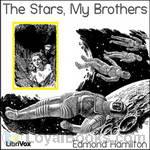 The Stars, My Brothers
The Stars, My Brothers
Edmond Hamilton (1904 – 1977) had a career that began as a regular and frequent contributor to Weird Tales magazine. The first hardcover publication of Science Fiction stories was a Hamilton compilation, and he and E.E. “Doc” Smith are credited with the creation of the Space Opera type of story. He worked for DC Comics authoring many stories for their Superman and Batman characters. Hamilton was also married to fellow author Leigh Brackett. – Published in the May, 1962 issue of Amazing Stories “The Stars, My Brothers” gives us a re-animated astronaut plucked from a century in the past and presented with an alien world where the line between humans and animals is blurred. | |
 The City at World's End
The City at World's End
A surprise nuclear war may cause the End of the World, but not the way anyone could have imagined. A classic science fiction tale from Galaxy Magazine. | |
 Metal Giants
Metal Giants
Huge metal monsters spread terror throughout the land... the tale of a Frankenstein that turned on its creator! - Summary by Weird Tales Magazine, December 1926 | |
 Citadel of the Star Lords
Citadel of the Star Lords
Out of the dark vastness of the void came a conquering horde, incredible and invincible, with Earth's only weapon—a man from the past! From Imagination Stories of Science and Fantasy magazine, October 1956. - Summary by Original Gutenberg text | |